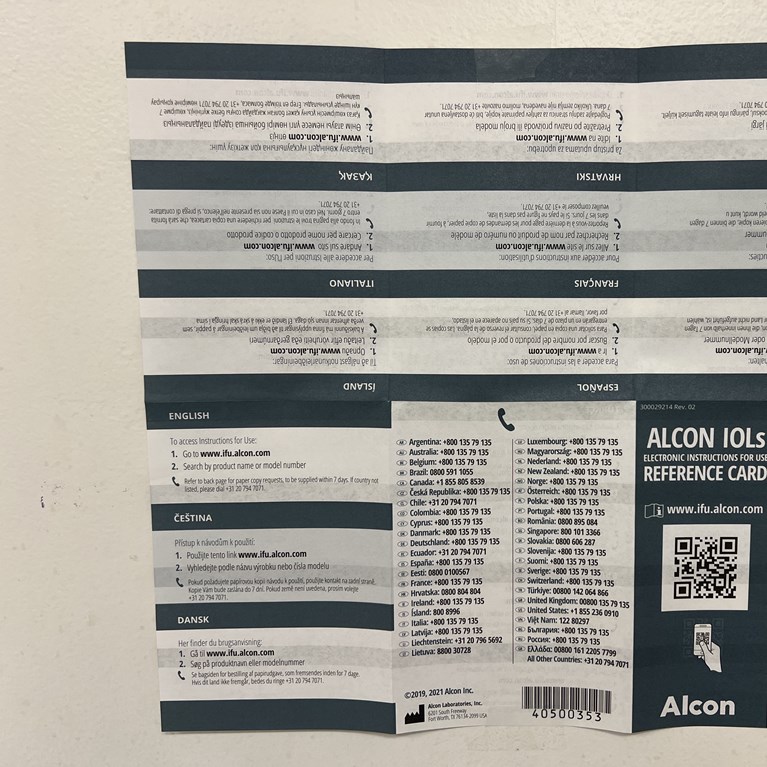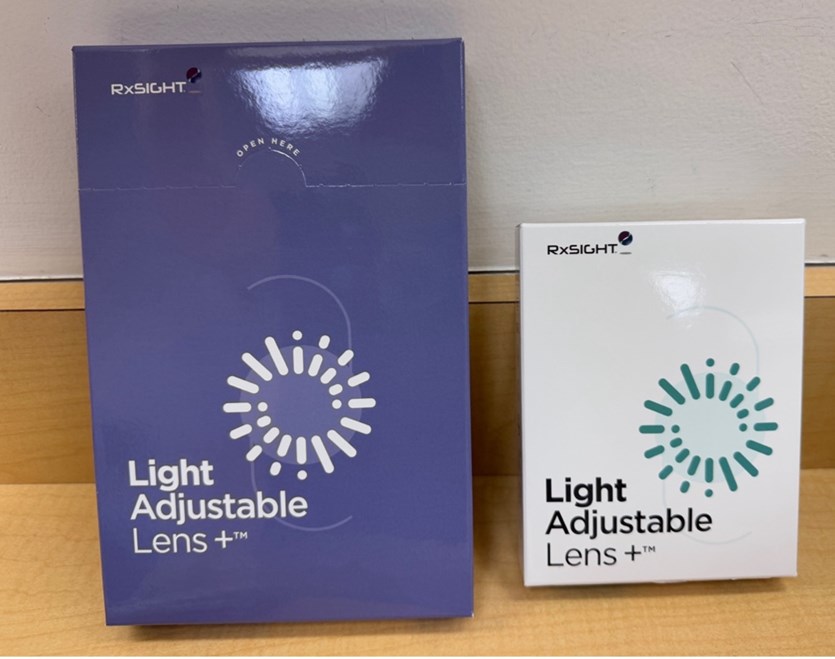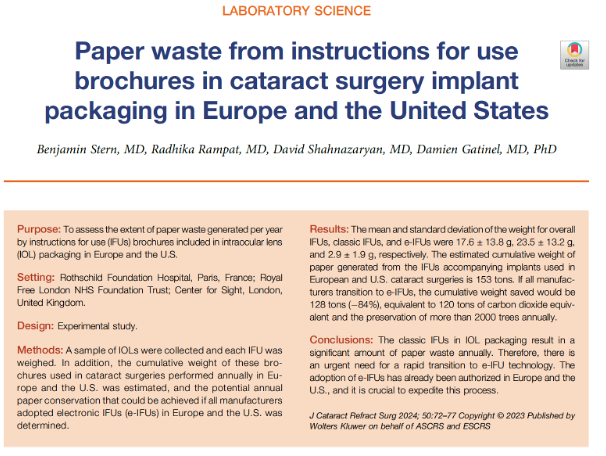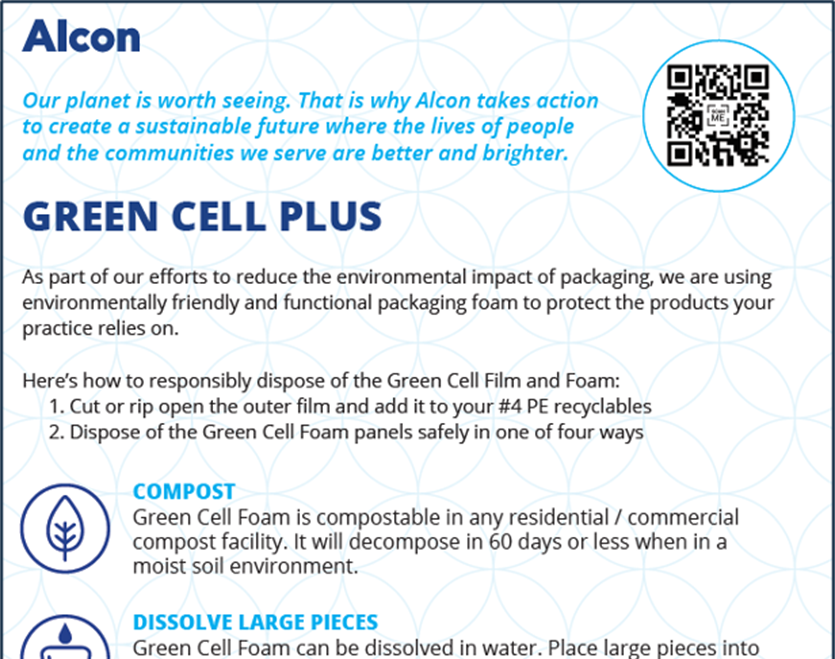

Sustainable Packaging
Reducing waste, one package at a time

Study on IOL Packaging Waste
An individual IOL represents a small fraction of the total weight of the packaged IOL. This report compares IOL packaging waste across multiple IOL manufacturers in the United States, analyzing total weight and material contributions (ie. paper, plastic, etc).
By identifying potential targets for reducing the size and weight of packaged IOLs, it highlights opportunities for manufacturers to lower the carbon footprint of their products. For instance, based on EyeSustain’s feedback, RxSight has redesigned the light adjustable lens packaging with a 50% reduction in size.
The Push for Electronic IFUs
All medical devices are required by regulation to include instructions for use (IFU) to provide information on safe and effective use of the product. However, printed IFUs have become a source of needless waste given many include multiple languages and most, if not all, are never read. Digitizing IFUs and linking them to QR codes printed on product packaging is a pragmatic solution and a key step in reducing the size and weight of packaging for medical devices.
Currently in the United States, the FDA has allowed electronic IFUs (eIFUs) for medical devices used in a professional setting; in other words, those that do not have direct patient interaction. Within ophthalmology, this includes IOLs, viscoelastics, trypan blue, and medications for intravitreal injections. Industry leaders like Alcon have already transitioned from printed IFUs to eIFUs for packaged IOLs, reducing packaging weight by over 50%, and other manufacturers are quickly following suit. A recent study (link to Stern et al pdf, attached) estimated that collectively transitioning to eIFUs from traditional paper IFUs for IOL packaging would result in cumulative weight savings of approximately 84%, equivalent to preserving more than 2000 trees annually.
In June 2025, the European Union expanded the application of eIFUs to include all medical devices and accessories intended for professional users, rather than limiting eIFUs to implantable devices only like IOLs. This is an exciting and important step for sustainability goals in the healthcare sector.


Replacing Styrofoam
Styrofoam (polystyrene) is a common component of product packaging due to its light weight and thermal insulation properties. Yet, its environmental impact is significant as polystyrene is not biodegradable and takes hundreds of years to break down in landfills. Manufacturers are exploring environmentally friendly polystyrene alternatives such as TemperPack’s commercially available “green cell foam”, which is compostable or dissolvable in water.
To learn more about TemperPack's green cell foam: